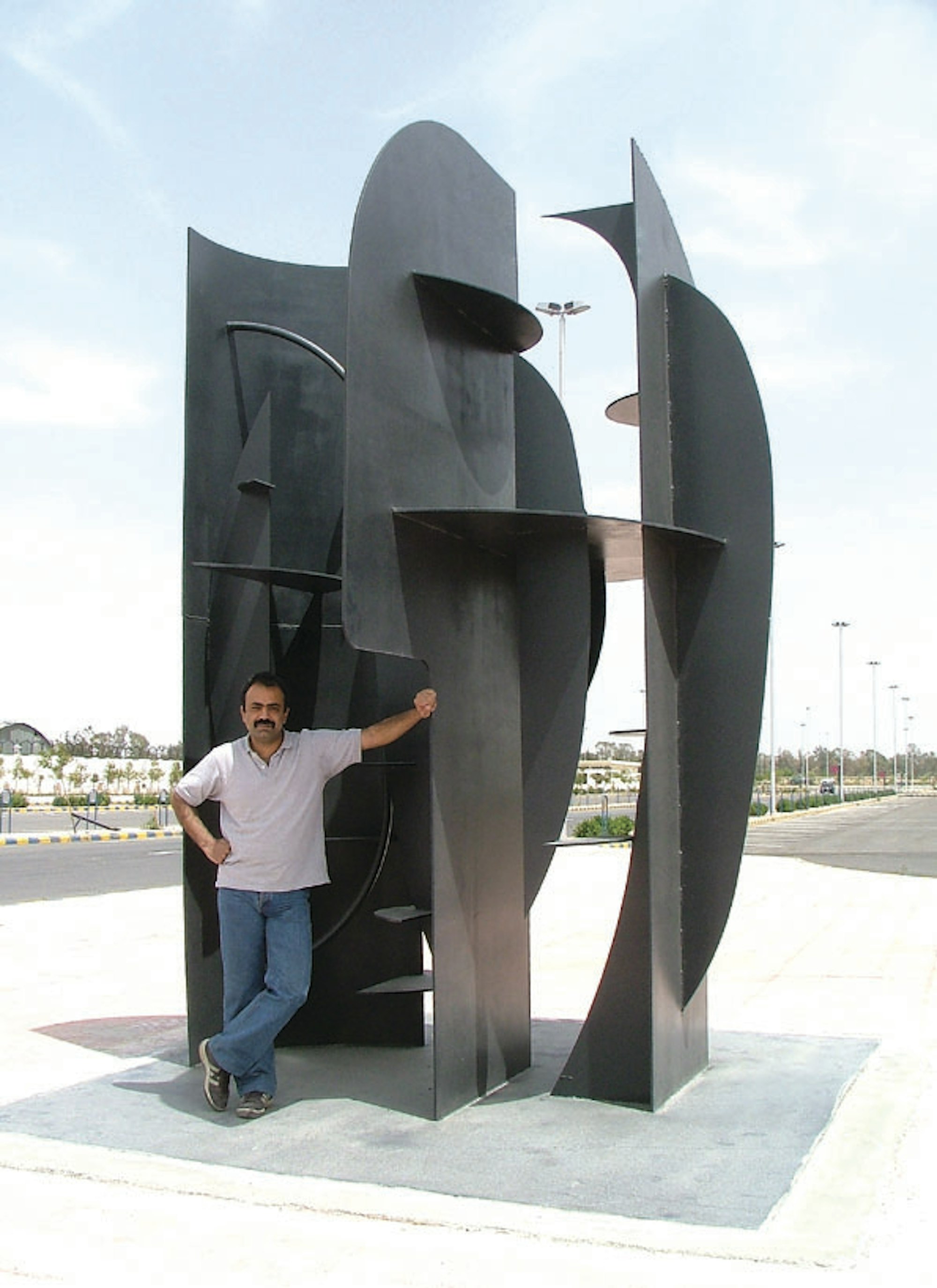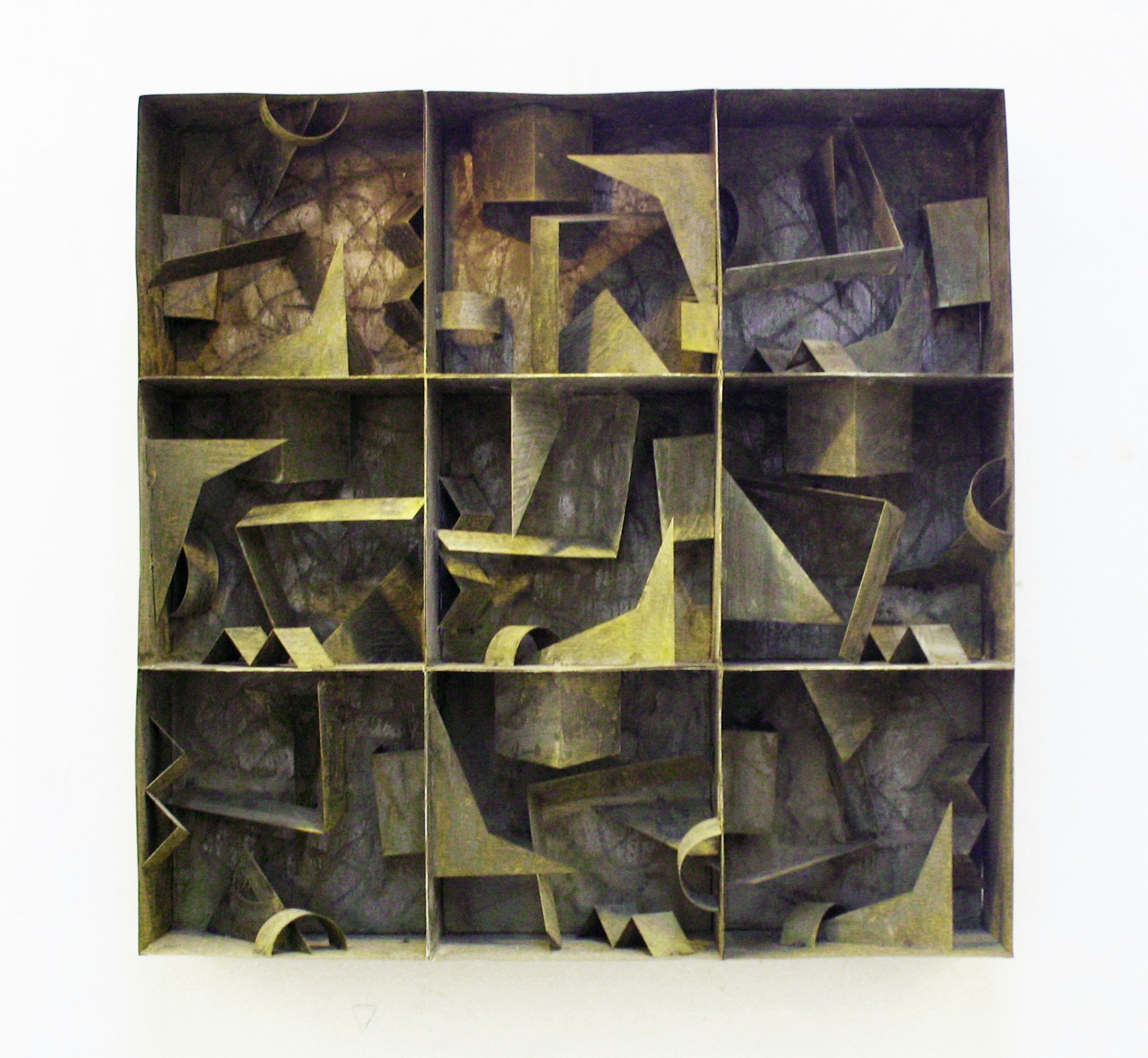Artist Bassel Al Saadi about his efforts to create a digital record of art that has been lost or destroyed in the Syrian civil war.

The artist Bassel Saadi was living and working in Syria in the run up to the Arab Spring protests in Syria in 2011. What started as a popular uprising against President Baschar al-Assad turned into a civil war that is defined by a kind of Hobbesean brutality and in its many phases became a site for numerous external actors to play out imperial ambitions. The destruction of art, and, inevitably, of artists in the war has also been a defining feature. The iconic images of the destruction of the Temple of Baal Shamin in Palmyra by ISIS is only the most widely known visible expressions of a war that left none of the country’s rich cultural heritage untouched. ISIS' murder of the Khaled al-Assad, the custodian of the ancient temple, in the prelude to the temple’s destruction attests to the war’s concerted violence against historical memory and all those who seek to preserve it. Saadi himself was ultimately displaced from Syria and now lives in Italy as a refugee. A sculptor of international renown before the war, Saadi found himself bereft of a practice that had sustained him, as well as of his home and his family. In the years since the war, Saadi has been working to construct an archive of modern and contemporary Syrian art that will be accessible digitally for a global audience. The project, entitled Modon: The Memory of Urban Art and Citizenship in Syria seeks to preserve the legacy of the artistic lineage of post-World War 2 art in Syria. Saadi hopes to use the project to record the voices and memories of living Syrian modern artists, as well as to compile a record of lost or missing modern masterpieces. Saadi discussed the roots and philosophy of the project with Future Archives.
Future Archives: Could you sketch out briefly some of the major developments, as you see them, in Syrian modern and contemporary art, particularly with regard to the works you’re interested in archiving?
Bassel Saadi : There is no clear sequence of art development in Syria, meaning that generally we do not find art schools at a certain stage and then other artistic schools that followed. But it is clear that the artists who appeared in the sixties were working seriously, and we find in their works a strong and clear development; for example, in the works of artists like Mahmoud Hammad, Fateh Al-Modarres, and Naseer Shura. The seventies and eighties were a bad period for several reasons: First, the emigration of the rich and the middle class who sponsored art. Second, the government in that period sent artists loyal to the Baath regime to different countries under Communist regimes, and sometimes to France, and then they returned to teach at the College of Arts. The result was students with unclear artistic concepts. In the nineties, a cohort of artists - painters and sculptors - appeared who used the human body in making expressive artworks. After the year 2000, with the appearance of other groups, there was more openness trying to find an independent artistic identity.

Are there key figures who served as inspirations for you, especially figures who are not widely known outside of Syria?
I was influenced by Syrian artist Mahmoud Hammad, whose works I saw in Damascus at the Faculty of Arts and in private collections. His research was developing between form and abstraction in a beautiful and profound way. Ultimately, however, I had to find artistic role models from outside the Syrian artistic culture to be able to express myself freely: Louise Nevelson, Anthony Caro, David Smith, Kandinsky and Matisse were particularly strong influences.
Where do you see those influences in your work?
Louise Nevelson unique way of constantly forming new elements was amazing to me, her use of wood residues to make sculptures inside boxes influenced my own work with boxes. With Anthony Caro, I liked his rebellion against his teacher, Henry Moore, his rebellion against figuration. What fascinated me was Caro's use of sheet metal to develop his sculptural philosophy and how he worked with the remains of iron from other processes. What I learned from David Smith is the development of sculptures by means of research in painting, transforming painterly elements - line and shape - into metallic elements. I saw Matisse's work at the Centre Pompidou. It is the basis of my sculptural philosophy, making sharply cut sheets. Although Matisse did not use metal to make sculptures, he has become a great teacher for generations of artists who have used metal.
"No country in the world deals neutrally with the culture of another country. Acquaintance with the culture of another civilisation always takes place with risks."
Your archive seeks to redress the loss and destruction of artworks. Is there a particular work that could offer some insight into the ways in which war has affected Syria’s modern and contemporary art history?
There are so many stories. For example, during the war, the Museum of the Directorate of Arts was exposed to a flood due to neglect and hundreds of works were lost. There is the city of Palmyra and the destruction and theft of antiquities in it by all parties in the war. The sculptor Zaki Sallam had his entire workshop stolen by regime soldiers and found his sculptures being sold in the streets. Personally, one of my works was broken by the regime’s soldiers when I tried to transport my sculptures from Damascus to Beirut. And, of course, there are hundreds of unknown stories.
Europe has a very complex history with the art historical heritage of countries throughout the Middle East, as well as other areas of the formerly colonised world. Europe’s tradition of scholarship, as Edward Said, Aijaz Ahmad and others have noted, has often constructed pernicious notions of the ‘Orient’, and other non-European spaces and cultures. Have these historical tensions proven to be a barrier in the project, or is it something that you’re finding scholars from Europe prepared to confront and redress as they work on the project?
No country in the world deals neutrally with the culture of another country. Acquaintance with the culture of another civilisation always takes place with risks. The greatest danger is looking at another culture without understanding the social, political and economic interactions of it. This danger increases when the refugee intellectual surrenders to a host culture. I must be careful about presenting my country's culture in Europe, and I always try to communicate with European intellectuals who have the ability to understand this point.
"The Syrian people are torn, and their history is torn. Archiving is an attempt to link the past with the future."
Archives have a somewhat illusory dimension in their own right. They offer an appearance of stability or continuity. Sometimes they explicitly assert narratives; sometimes they implicitly ‘guide’ the ways in which people who access them form narratives about a given subject. Your project deals directly with the notion of narrative rupture: war has literally broken connections between art traditions and people. Could you discuss the ways you’ve thought about narrative - as continuous and disrupted - in the construction of your project?
The Syrian people are torn, and their history is torn. Archiving is an attempt to link the past with the future. It is an attempt to form questions addressing the creation of identity. An archiving project does not have the right to direct people, because it will lose its credibility. For example, the project must include artists and intellectuals who worked with the regime as well as opponents. History is history, no part should be privileged relative to any other.
In addition to archiving, I will try to include critical writing about the stages that culture, the arts, and creativity in general have gone through in Syria, an attempt to understand our history in a way free from the censorship that has ruled us for decades. I dream that in the future we will be able to collect the works of young Syrian artists in an exhibition held annually.
Having lived in Italy for some time, you’re getting a view of the ways in which the ‘heritage industry’ works in Europe. One could think of many Italian cities as ‘archives’ of a kind. Have you had any thoughts about the ways in which Europe preserves its heritage?
When I planned the project between 2017 and 2018, I observed how historians in Italy preserve archives rigorously, but I have not yet been able to understand the complex relationship between the method of preserving history and the present in terms of politics, social relations, and even tourism. I saw museums of food, and of city memories, museums of thinkers, and museums of industrial inventions; the relationship of European peoples to their history. I was sad because I know about dozens of Syrian writers, inventors, and thinkers about whom no one knows. It is important for dictatorships to abolish the past.

Have you been able to contact other artists in the Syrian diaspora about the project? Have they been receptive to being involved?
When I wrote the project in 2018, I communicated with Syrian artists and intellectuals in Europe and they were enthusiastic about the idea. At the beginning of the project, I needed to gather a number of intellectuals to make a board of directors for the project, and we try to meet every six months or every year.
How have these conversations played out?
The dispersal of the Syrian diaspora poses great challenges to any collective cultural work, but modern means of communication make it easy to communicate and exchange ideas. Those I know want us to meet even more continuously. The feeling of the homeland’s loss is compensated by artistic work and writing, but all of that is threatened by loss: the loss of our identities if we do not meet artistically and with critical engagement. To offer some names, I periodically communicate with Muhammad Omran, Najah Baqai, Nour Asaliya, and Ayham Agha, Anas Homsi, Mayar Al Roumi, and many others. We all combine our efforts, but we are waiting for support.
Have you taken inspiration for the project from other artistic archive projects or other artistic attempts to recover historical memory after wars?
No, my project was not inspired by other projects, because the Syrian case is relatively special in terms of the great devastation that has occurred. I have not found a similar project in Iraq, but I found in Palestine the Al-Wasiti project for archiving Palestinian art. My project differs in terms of trying to build a cultural memory, as much as possible, for a long period, 50-60 years, and, for this, I mean everything that can be assembled from urban activity in Syria.
Bassel Al Saadi
Artist Bassel Al Saadi was born in Beirut in 1971 and studied at the Institute of Applied Arts in Damascus. In his artistic practice, drawing and paintings are deeply intertwined with his sculptural works in metal. Al Saaadi has exhibited his works in Damascus and Paris, at the Berlin Biennale and Art Abu Dhabi. He was a guest artist at Villa Romana, Florence, from July 2017 to 2018. Displaced from Syria as a result of the war, he now lives in Italy. Bassel Saadi currently is seeking support for his project Modon: The Memory of Urban Art and Citizenship in Syria.